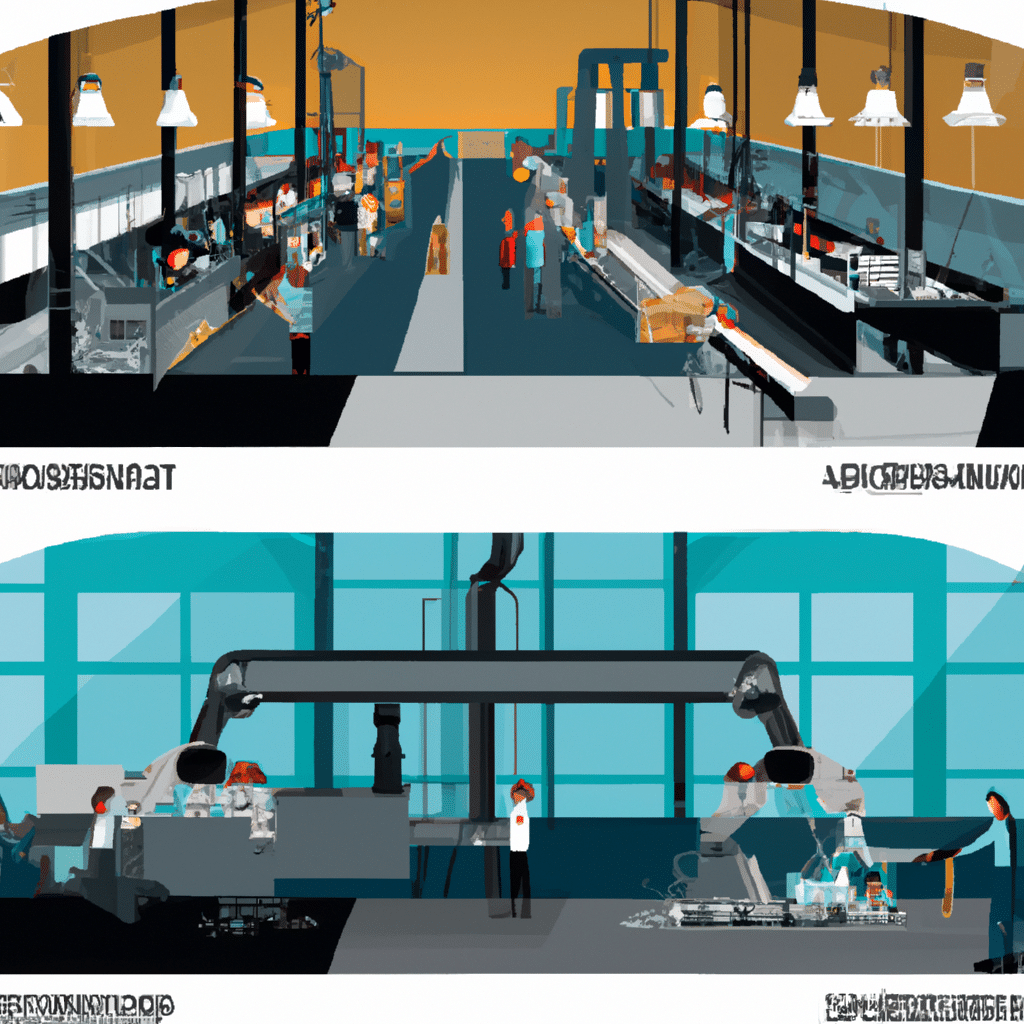The Benefits and Drawbacks of Using Automation in Manufacturing
In recent years, automation has become increasingly popular in the manufacturing industry. This technological advancement has revolutionized the way manufacturers operate, allowing them to streamline their processes, improve efficiency, and reduce costs. However, like any technology, automation has its benefits and drawbacks. In this article, we will explore the advantages and disadvantages of using automation in manufacturing.

Benefits of Automation in Manufacturing
Improved Efficiency
One of the most significant benefits of automation in manufacturing is improved efficiency. Automated systems can perform repetitive tasks at a much faster rate than humans, without experiencing fatigue or making mistakes. This results in a faster production cycle and increased output.
Reduced Labor Costs
Another significant benefit of automation is that it can reduce labor costs. Automated systems can perform tasks that would typically require human labor, which can result in a reduced workforce. This can save manufacturers a significant amount of money on salaries, benefits, and training.
Improved Quality Control
Automation can also improve quality control in manufacturing. Automated systems can perform tasks with greater accuracy and consistency than humans, resulting in fewer errors and defects in finished products. This improves overall product quality and reduces waste.
Increased Safety
Automation can also improve safety in manufacturing. Automated systems can perform tasks in hazardous environments or situations that would be dangerous for humans. This can reduce the risk of workplace injuries and accidents, improving overall safety for employees.
Increased Flexibility
Finally, automation can increase flexibility in manufacturing. Automated systems can be programmed to perform various tasks, allowing manufacturers to adapt quickly to changing production needs. This can increase the responsiveness of manufacturers to market demands, resulting in increased profitability.
Drawbacks of Automation in Manufacturing
High Initial Investment
One of the biggest drawbacks of automation in manufacturing is the high initial investment required. Automated systems can be expensive to purchase and install, requiring significant capital investment. This can be a significant barrier to entry for smaller manufacturers.
Reduced Employment Opportunities
Automation can also reduce employment opportunities in manufacturing. Automated systems can perform tasks that would typically require human labor, resulting in a reduced workforce. This can lead to job losses and reduced opportunities for workers.
Maintenance and Repair Costs
Automated systems require regular maintenance and repair, which can be costly. Manufacturers must invest in skilled technicians to maintain and repair their automated systems, which can add to the overall cost of using automation.
Potential for System Failures
Automated systems can also be prone to system failures, which can result in downtime and lost productivity. This can be particularly problematic if the automated system is responsible for a critical production process.
Lack of Flexibility
While automation can increase flexibility in manufacturing, it can also lead to a lack of flexibility. Automated systems are typically programmed to perform specific tasks, and they may not be able to adapt quickly to changing production needs. This can limit the ability of manufacturers to respond to market demands.
Conclusion
In conclusion, automation can provide significant benefits to manufacturers, including improved efficiency, reduced labor costs, improved quality control, increased safety, and increased flexibility. However, there are also drawbacks to using automation in manufacturing, including high initial investment costs, reduced employment opportunities, maintenance and repair costs, potential for system failures, and a lack of flexibility. Ultimately, the decision to use automation in manufacturing should be based on a careful consideration of the benefits and drawbacks, as well as the specific needs of the manufacturer.












